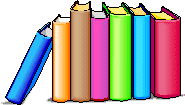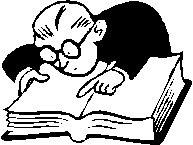|
What is Bibliotherapy ?
The term bibliotherapy has been defined by Russell and Shrodes (1950) as a dynamic interaction process between the personality of a reader and literature. This interaction may be used for personality assessment, adjustment, and growth. Any story that is related to one's problem may serve as a springboard for discussion and possible resolution of that dilemma.
Most of the people may be aware of the fact that reading can be used as a way of therapy. Since we see our reflections in the pages of a book, this may be a therapeutic reading. While reading these kinds of books, almost every one of us gain new ideas, insights, and opinions about ourselves, or our environment, and etc. This may be called as the purpose of using bibliotherapy; to help an individual to overcome one's emotional conflict which is linked with real life problems, or dilemmas by having an individual read related literature on that topic.
When bibliotherapy is used, it is believed that the individual gets the benefits of bibliotherapy by passing through these three stages, that are named respectively as: Identification-- the individual identifies with a book character and events in the story, or the novel, either real or fictitious. It may be very useful to see a character in the same position as one is in. Catharsis-- the individual becomes emotionally involved in the story, or the novel. Thus, one is able to release pent-up emotions under safe circumstances, which are often done through discussion, and/or art work. Insight-- after catharsis, the individual is assumed to become aware of one's own problems. Then, possible solutions to the book character's and one's own personal problems are identified. As it is seen above, this is the challenge and the mission of bibliotherapy. In order to affect change, personalization through books and literature should be the focus.
For more information, visit http://maxweber.hunter.cuny.edu
|

